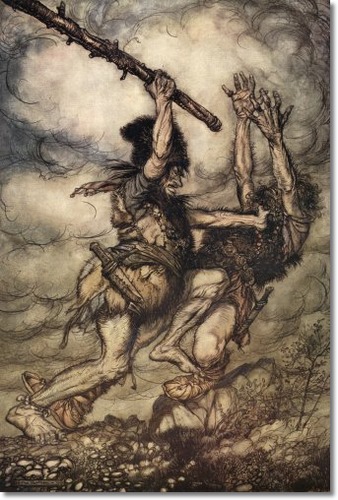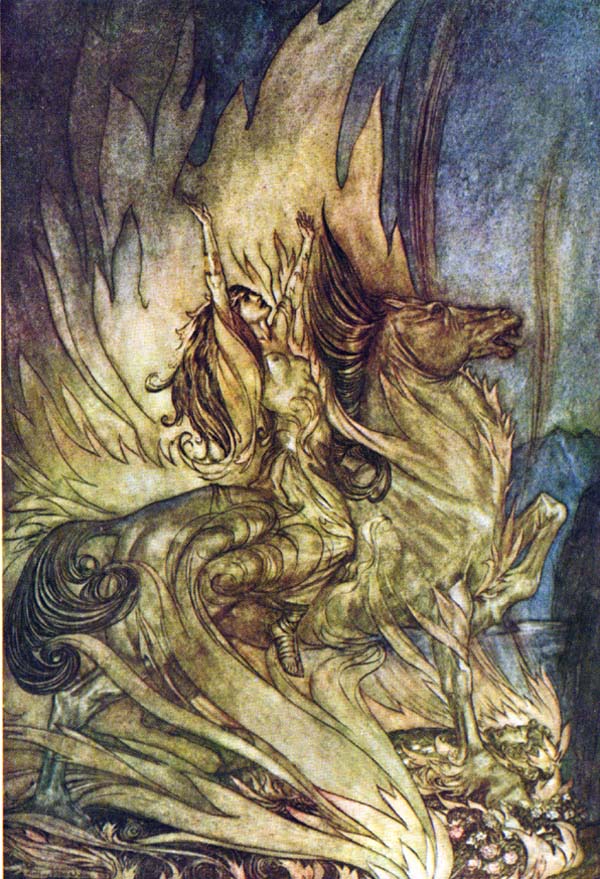 Richard Wagner is a controversial figure in the intellectual sub-culture of American orthodox Catholicism. He is identified as one of the key architects of modern music, breaking the rules and so making it fashionable so that classical music today is has become the random noise that is Harrison Birtwistle.
Wagner's musical sins were, as I understand it, two fold (we'll leave his personal life aside). First the opening of his opera Tristan and Isolde and the inclusion of the 'Tristan chord', that sounds dissonant in its setting; the second is his use of a compositional device called 'chromaticism'.
Richard Wagner is a controversial figure in the intellectual sub-culture of American orthodox Catholicism. He is identified as one of the key architects of modern music, breaking the rules and so making it fashionable so that classical music today is has become the random noise that is Harrison Birtwistle.
Wagner's musical sins were, as I understand it, two fold (we'll leave his personal life aside). First the opening of his opera Tristan and Isolde and the inclusion of the 'Tristan chord', that sounds dissonant in its setting; the second is his use of a compositional device called 'chromaticism'.
In regard to the first, the opening chord of the opera does sound discordant to me and I don't like what I am hearing. I heard the famous English conductor Sir Simon Rattle once describe this little passage as so influential that in his estimation it marked the beginning of modern classical music. Sir Simon thought this was a good thing, as far as I can gather, but if he is right then for people like me who can't stand dissonant music, then perhaps this does make Wagner the great villain...one who had in impact, we might say, of Wagnerian proportions.
Second is Wagner's free use of chromaticism. This the use of intervals and chord sequences that move freely between keys and modes. Again, I am old that it is in Tristan und Isolde particularly that he uses this device. Increased chromaticism is often cited as one of the main causes or signs of the "break down" of tonality. As a result the world of classical music that gave us Bach and Beethoven metamorphosed into one that gave us Boulez and Birtwistle.
 But, and here's the problem for me, apart from those little passages referred to much of Wagner sounds sweet and harmonous to my inexpert ear. In fact Wagner's Siegfried Idyll is one of absolute favourite pieces of music. I heard a story associated with this. He wrote it for his wife's birthday and presented it to her on the day by having the orchestra play it on a boat on a mountain lake at dawn. It was a misty morning and as the boat approached the shore the music could be heard before the boat and orchestra could be seen. It is gushingly romantic and regardless of the truth of the story, I imagine that mountain lake scene every time I hear it.
But, and here's the problem for me, apart from those little passages referred to much of Wagner sounds sweet and harmonous to my inexpert ear. In fact Wagner's Siegfried Idyll is one of absolute favourite pieces of music. I heard a story associated with this. He wrote it for his wife's birthday and presented it to her on the day by having the orchestra play it on a boat on a mountain lake at dawn. It was a misty morning and as the boat approached the shore the music could be heard before the boat and orchestra could be seen. It is gushingly romantic and regardless of the truth of the story, I imagine that mountain lake scene every time I hear it.
It may be that like the Impressionists in art, whose influence for radical change is seen more easily in those that followed than in their own work, Wagner started the trend dissonance without actually employing it much himself. You can make your own mind up on this one, here is Herbert von Karajan conducting the Vienna Philharmonic. The pictures incidentally are illustrations of the published stories of Wagner's operas painted in the early 20th century by the great English illustrator Arthur Rackham. https://www.youtube.com/watch?v=f0QsSCPoa0w

